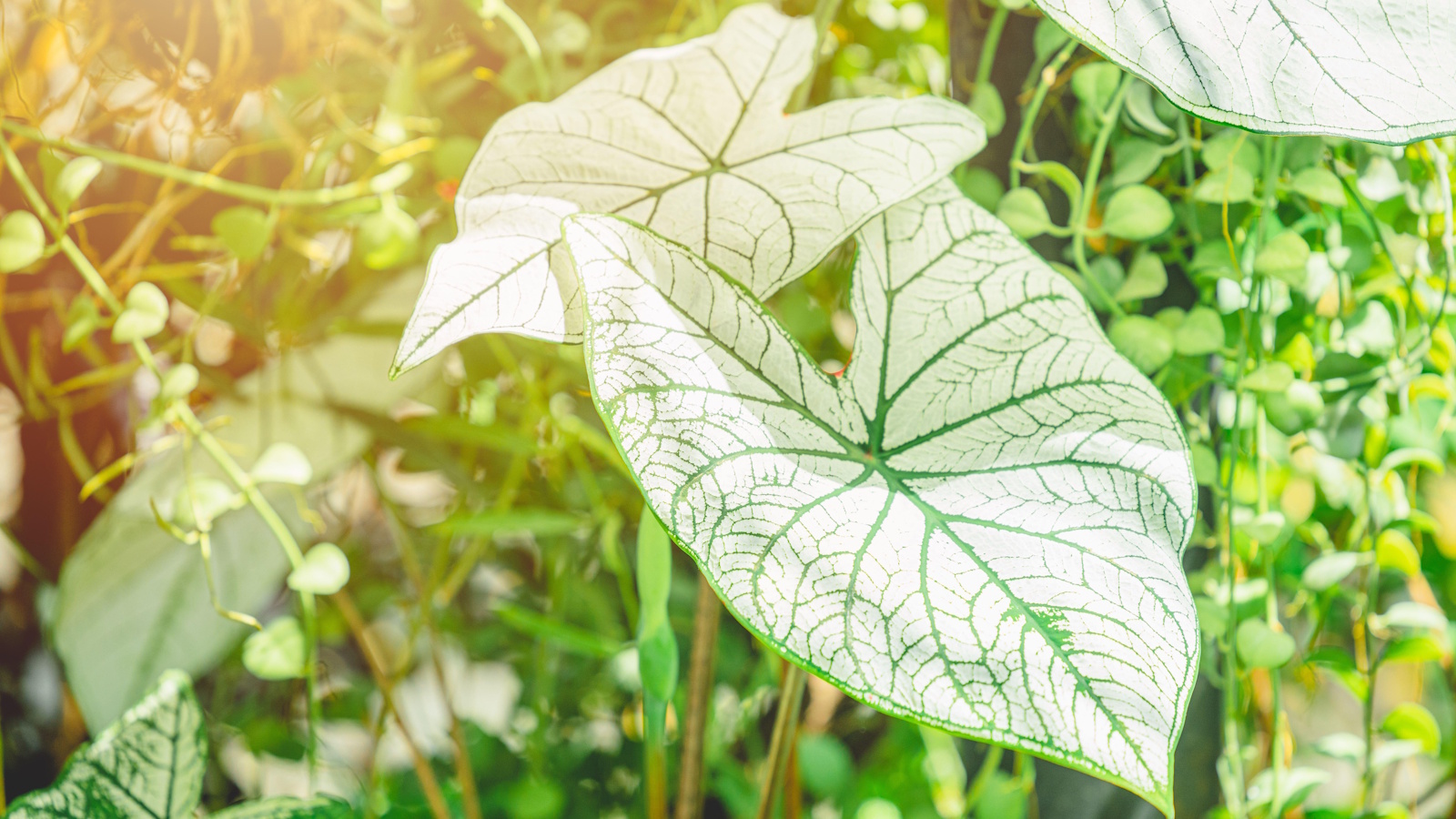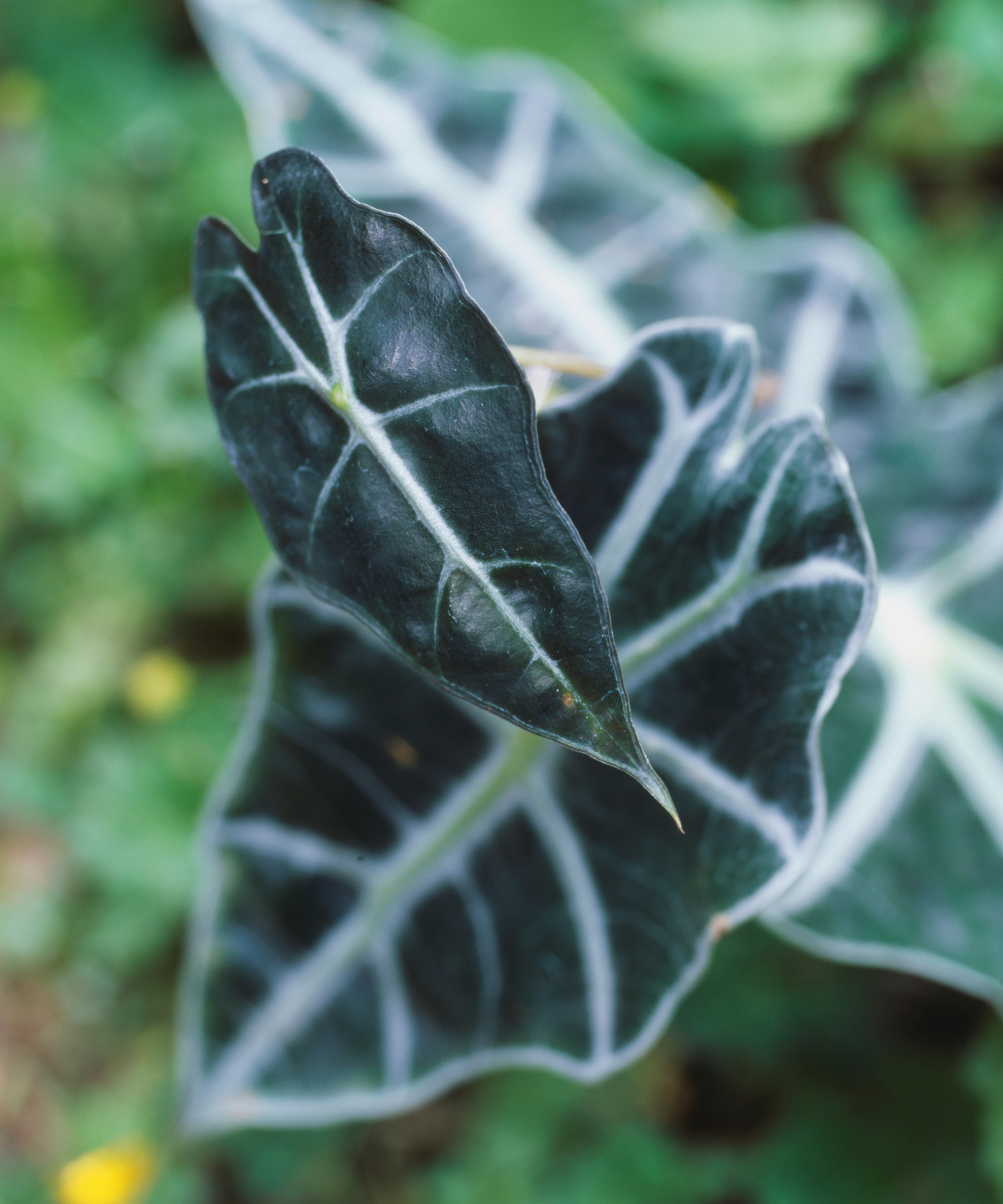Can you grow alocasia outdoors? Plant experts reveal how to add this statement houseplant to your yard
In the right climate, alocasia plants can add jungle foliage to your garden landscape


If you're a fan of big, statement foliage, it's likely you would have come across alocasia plants. They're popular houseplants that instantly green up interiors with their iconic arrow-shaped foliage and unique, often striped, stems. But, did you know you can also grow alocasia outdoors to enjoy them in the yard?
Of course, as tropical plants, it's true you can only care for an alocasia outdoors in certain climates. More specifically, it is advised to only grow an alocasia outdoors in US hardiness zones 9-11. Nevertheless, it's also possible to bring your alocasia outdoors for part of the year in some milder climates.
To find out more about how to grow an alocasia outdoors, we spoke to plant experts. Here, they share everything you need to know about adding this tropical plant to your backyard's planting scheme.

Can you grow alocasia outdoors?
You might have also heard alocasias being called 'elephant ear plants' because of the shape and texture of their leaves. This is a common name also given to colocasia - a plant closely related to alocasia with slightly differing foliage.
Colocasia plants tend to have much larger, yet thinner foliage and are often a popular outdoor plant. Although they have a similar appearance, caring for elephant ears outdoors and caring for alocasias outdoors does have some differences. Here's what you need to know to grow alocasia outdoors successfully:
How to grow alocasia outdoors

- Position: Natively found along streams and in tropical rainforests in Asia, alocasias are somewhat sensitive to direct sun which can lead to leaf scorch. At the same time, alocasia doesn't like to be hidden from the sun entirely, as they aren't full-shade plants. 'Partial sun is best,' says Jeannie Psomas, plant expert and owner of The Plant Lady: San Francisco. 'Morning sun is great, but protect these plants from the harshest afternoon sun,' she advises. You will likewise want to choose a spot that is protected from strong winds, which could snap the slender stems of alocasia or rip its leaves. 'Such a location is generally near a structure, such as a house or under a patio cover or roof overhang,' suggests Julie Bawden-Davis, plant expert at Healthy Houseplants. You may even choose to plant your alocasia in a pot to be able to move it as needed for this reason. Keeping it in a protected spot will keep it safe from wind chill, too.
- Temperature: Even when grown indoors, these tropical indoor plants need to be kept in a warmer room temperature. Between 65-80°F is ideal for alocasia, but they can also cope with as low as 50°F. This means you are able to bring your alocasia outdoors for the summer months if you live in a mild climate. 'Alocasia will not survive winters out of USDA zones 9-11, so if you are growing in any other regions, you must bring the plant in before the first frost and grow indoors until the following spring,' warns Julie. Keep track of outdoor temperatures with this outdoor thermostat from Amazon and act accordingly. Too-cold temperatures may lead to your alocasia drooping. Likewise, don't forget to take action to prevent pests when you bring houseplants back indoors to prevent the spread of pests to your other houseplants.
- Watering: Knowing when to water plants can be tricky, especially when you have lots of different plants with differing water needs. As houseplants, alocasias only need to be watered when the top couple of inches dries out. The same goes when you grow alocasia outdoors, as these plants don't enjoy bone-dry soil, but likewise won't cope well with oversaturated soil - either could cause an elephant ear plant to turn yellow. Something to keep in mind when growing these plants in an outdoor environment is their water levels will also be topped up by rain. This may mean you don't need to water your alocasia as frequently as you would indoors. To be on the safe side, use this soil moisture meter from Amazon to identify when your outdoor alocasia needs watering. 'A nutrient-rich, well-draining soil type will also aid moisture level management,' notes Julie.

Jeannie Psomas owns The Plant Lady: San Francisco, an indoor plant shop located in San Francisco, California which caters to collectors and hobbyists alike. With a strong emphasis on plant science and education, Jeannie's philosophy is that anyone can grow gorgeous plants indoors.

Julie Bawden-Davis is a garden author and University of California Certified Master Gardener, who has written several gardening books, including Indoor Gardening The Organic Way. In addition to running HealthyHouseplants.com, she shares indoor gardening advice on her YouTube channel @HealthyHouseplants.
FAQs
Do you need to prune alocasia?
Alocasia plants don't tend to need regular pruning. However, it is wise to remove any damaged or dead foliage to prevent your plant becoming weak and susceptible to pests or diseases.
This is especially true for alocasias grown in the yard, where they are exposed to things like rain and wind that may occasionally rip or damage their foliage. To prune an alocasia, use essential pruning tools - like these pruning shears from Amazon - to make clean cuts.
Design expertise in your inbox – from inspiring decorating ideas and beautiful celebrity homes to practical gardening advice and shopping round-ups.
Can you grow colocasia indoors?
Although it's more common to grow colocasia plants outdoors and alocasia plants as houseplants, it is possible to grow colocasias indoors too. By maintaining a humid, warm, moist growing environment, you can grow colocasia as an indoor plant. Alternatively, you can start off colocasia plants indoors, or in a greenhouse, before transplanting them outdoors in mid-late spring.
Whether you choose to plant an alocasia in your yard or have one in your container garden, there's no denying their iconic foliage adds drama to backyard planting. If you are growing your alocasia in a pot, don't forget to repot your alocasia as it grows bigger.
And if these plants perform well in your yard, try propagating your alocasia to add more of their statement foliage to your garden.

Tenielle is a Gardens Content Editor at Homes & Gardens. She holds a qualification in MA Magazine Journalism and has over six years of journalistic experience. Before coming to Homes & Gardens, Tenielle was in the editorial department at the Royal Horticultural Society and worked on The Garden magazine. As our in-house houseplant expert, Tenielle writes on a range of solutions to houseplant problems, as well as other 'how to' guides, inspiring garden projects, and the latest gardening news. When she isn't writing, Tenielle can be found propagating her ever-growing collection of indoor plants, helping others overcome common houseplant pests and diseases, volunteering at a local gardening club, and attending gardening workshops, like a composting masterclass.